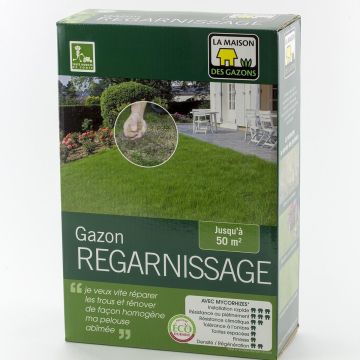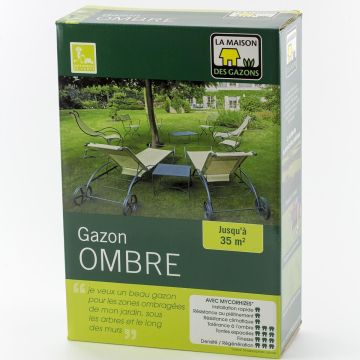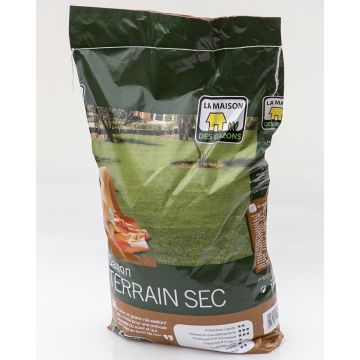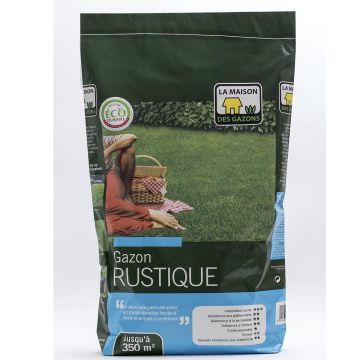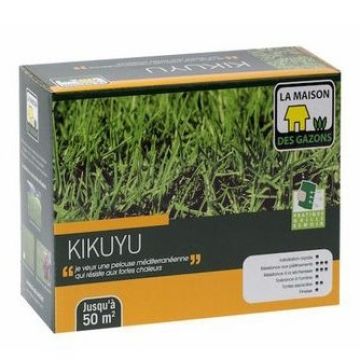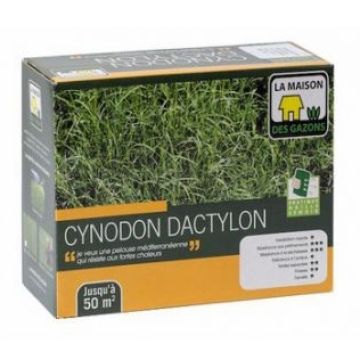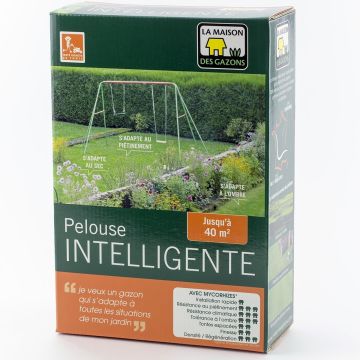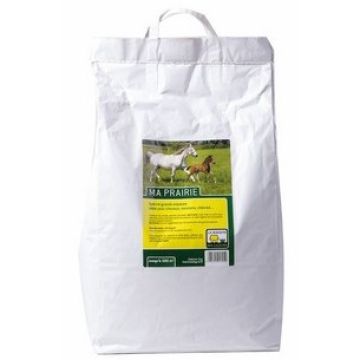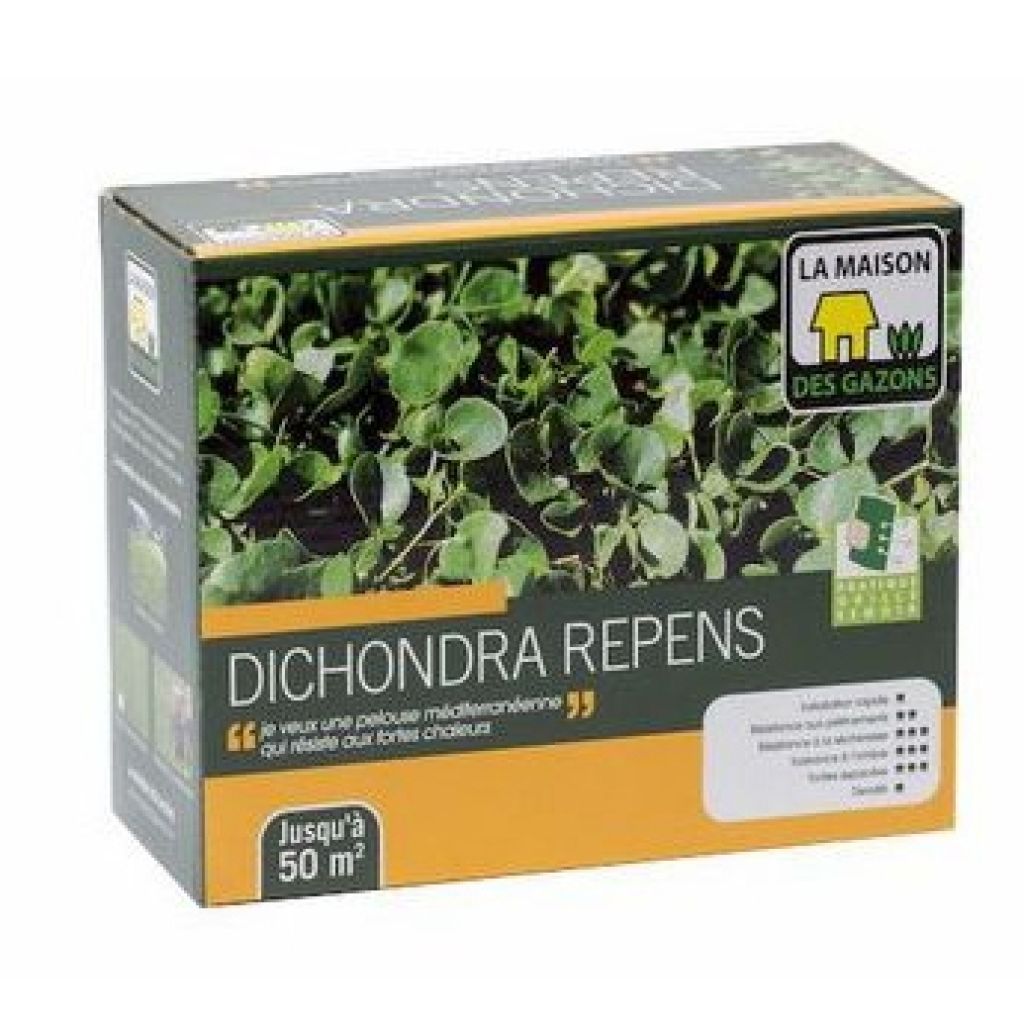

Graines de Dichondra repens 0.5 kg - dichondra rampant
Dichondra repens Seeds
Dichondra repens
Kidney Weed, Pennywort, Dichondra
Why not try an alternative variety in stock?
View all →This plant carries a 6 months recovery warranty
More information
We guarantee the quality of our plants for a full growing cycle, and will replace at our expense any plant that fails to recover under normal climatic and planting conditions.
Seed-only orders are dispatched by sealed envelope. The delivery charge for seed-only orders is €3.90.
Does this plant fit my garden?
Set up your Plantfit profile →
Description
Dichondra repens, sometimes called creeping Dichondra, is a small perennial plant that forms a dense ground cover, making it one of the best ground covers for partial shade or shade. It can tolerate drought and salty soils. Its small round leaves are a beautiful fresh green colour and persist in mild climates, but are burned by frost below -8°C (17.6°F). The root system can withstand short frosts of around -10/-12°C (14/10.4°F). Remarkable at the base of hedges or shrub or perennial beds, very useful in the gaps between paving stones, Dichondra repens does not require mowing and is a great alternative to grass in shaded and lightly trafficked areas of the garden, on small surfaces.
Dichondra creeping belongs to the family of Convolvulaceae, just like bindweeds and morning glories. It is native to Australia and New Zealand, but has naturalized in Texas, California, New Mexico, Northwest India, South Japan, and China. Dichondra is a perennial plant with rather slow growth. It develops long, hairy, and highly branched stems that root at each node. This characteristic allows it to colonize the surface of the soil. The thickness of the carpet depends on the exposure and the soil that hosts the plant: in the sun and in dry soil, its thickness will not exceed 3 to 5cm (1 to 2in). In shade and in moist soil, the stems elongate and the leaves are larger, with the plant reaching a height of 15cm (6in). A single plant can cover an area of 50 to 60cm (20 to 24in) in diameter, or even more. The stems are covered with very small leaves, more or less evergreen in winter, round, 0.5 to 2.50cm (0 to 1in) long, bean-shaped, often bending at the central vein. Very tightly packed together, they form a very dense, regular carpet, with a very fresh and shiny green colour. While it is sensitive to heavy frosts and excessive trampling, Dichondra repens has exceptional longevity. In case of pronounced summer drought, the foliage dries up and the plant eventually disappears.
Often used as an alternative to grass in moderately trafficked areas, Dichondra repens works wonders in dry shade, where few plants are willing to grow. To stay beautiful, it still requires regular weeding and watering that varies depending on the region, which limits its use to small areas (50 to 100 m²). It can be used alone or mixed with other ground cover plants: in the sun, it pairs well with yarrows (Achillea crithmifolia) and Phyla nodiflora. In shade, it can be paired, for example, with Soleirolia or Glechoma hederacea. An annual mowing in October is sufficient. It can also be planted in mass at the edge of pathways or at the base of perennials and shrubs, on slopes.
Composition:
- 100% Dichondra repens
Usage and dosage:
- 0.5kg box: approximately 50m²
- Sowing dose: 10g per m²
Report an error about the product description
Flowering
Foliage
Plant habit
Botanical data
Dichondra
repens
Convolvulaceae
Kidney Weed, Pennywort, Dichondra
Australia
Other Lawn
Planting and care
Sowing:
Sow directly in place in full sun, in March-April, in a well-prepared soil, free of weeds, refined and raked. Sow by broadcasting on the soil surface and lightly rake to cover the seeds. Optionally, pass the roller to ensure good adhesion of the seeds to the ground. Regularly water with a fine rain to keep the soil slightly moist until germination if it doesn't rain.
Dosage:
- 1 box of 0.5kg for 50m², approximately 10g/m²
Dichondra repens can replace lawn in moderately trafficked and not too large areas, as it requires regular maintenance and watering, depending on the regions. Sow Dichondra repens in all exposures. In shade, the foliage will be more developed. This plant needs a light, well-drained soil. If your soil is heavy, clayey and compact, incorporate river sand and compost and work the mixture thoroughly. Preferring humus-rich and compost-rich soils, the plant tolerates the presence of limestone well. Dichondra tolerates rather dry soils and dislikes stagnant moisture as well as daily watering in summer. Adapt the watering frequency to your climate: in hot regions, one to two waterings per week are often necessary to maintain a beautiful appearance of the carpet. Elsewhere, water as soon as the plant requires it. The first year of planting, careful manual weeding is essential until complete coverage of the soil. Afterwards, regular manual weeding, up to 6 times a year, is necessary to maintain a neat appearance of the carpet. Optionally, apply slow-release lawn fertilizer once or twice a year. An annual mowing is generally sufficient, preferably in October.
Sowing period
Intended location
This item has not been reviewed yet - be the first to leave a review about it.
Haven't found what you were looking for?
Hardiness is the lowest winter temperature a plant can endure without suffering serious damage or even dying. However, hardiness is affected by location (a sheltered area, such as a patio), protection (winter cover) and soil type (hardiness is improved by well-drained soil).

Photo Sharing Terms & Conditions
In order to encourage gardeners to interact and share their experiences, Promesse de fleurs offers various media enabling content to be uploaded onto its Site - in particular via the ‘Photo sharing’ module.
The User agrees to refrain from:
- Posting any content that is illegal, prejudicial, insulting, racist, inciteful to hatred, revisionist, contrary to public decency, that infringes on privacy or on the privacy rights of third parties, in particular the publicity rights of persons and goods, intellectual property rights, or the right to privacy.
- Submitting content on behalf of a third party;
- Impersonate the identity of a third party and/or publish any personal information about a third party;
In general, the User undertakes to refrain from any unethical behaviour.
All Content (in particular text, comments, files, images, photos, videos, creative works, etc.), which may be subject to property or intellectual property rights, image or other private rights, shall remain the property of the User, subject to the limited rights granted by the terms of the licence granted by Promesse de fleurs as stated below. Users are at liberty to publish or not to publish such Content on the Site, notably via the ‘Photo Sharing’ facility, and accept that this Content shall be made public and freely accessible, notably on the Internet.
Users further acknowledge, undertake to have ,and guarantee that they hold all necessary rights and permissions to publish such material on the Site, in particular with regard to the legislation in force pertaining to any privacy, property, intellectual property, image, or contractual rights, or rights of any other nature. By publishing such Content on the Site, Users acknowledge accepting full liability as publishers of the Content within the meaning of the law, and grant Promesse de fleurs, free of charge, an inclusive, worldwide licence for the said Content for the entire duration of its publication, including all reproduction, representation, up/downloading, displaying, performing, transmission, and storage rights.
Users also grant permission for their name to be linked to the Content and accept that this link may not always be made available.
By engaging in posting material, Users consent to their Content becoming automatically accessible on the Internet, in particular on other sites and/or blogs and/or web pages of the Promesse de fleurs site, including in particular social pages and the Promesse de fleurs catalogue.
Users may secure the removal of entrusted content free of charge by issuing a simple request via our contact form.
The flowering period indicated on our website applies to countries and regions located in USDA zone 8 (France, the United Kingdom, Ireland, the Netherlands, etc.)
It will vary according to where you live:
- In zones 9 to 10 (Italy, Spain, Greece, etc.), flowering will occur about 2 to 4 weeks earlier.
- In zones 6 to 7 (Germany, Poland, Slovenia, and lower mountainous regions), flowering will be delayed by 2 to 3 weeks.
- In zone 5 (Central Europe, Scandinavia), blooming will be delayed by 3 to 5 weeks.
In temperate climates, pruning of spring-flowering shrubs (forsythia, spireas, etc.) should be done just after flowering.
Pruning of summer-flowering shrubs (Indian Lilac, Perovskia, etc.) can be done in winter or spring.
In cold regions as well as with frost-sensitive plants, avoid pruning too early when severe frosts may still occur.
The planting period indicated on our website applies to countries and regions located in USDA zone 8 (France, United Kingdom, Ireland, Netherlands).
It will vary according to where you live:
- In Mediterranean zones (Marseille, Madrid, Milan, etc.), autumn and winter are the best planting periods.
- In continental zones (Strasbourg, Munich, Vienna, etc.), delay planting by 2 to 3 weeks in spring and bring it forward by 2 to 4 weeks in autumn.
- In mountainous regions (the Alps, Pyrenees, Carpathians, etc.), it is best to plant in late spring (May-June) or late summer (August-September).
The harvesting period indicated on our website applies to countries and regions in USDA zone 8 (France, England, Ireland, the Netherlands).
In colder areas (Scandinavia, Poland, Austria...) fruit and vegetable harvests are likely to be delayed by 3-4 weeks.
In warmer areas (Italy, Spain, Greece, etc.), harvesting will probably take place earlier, depending on weather conditions.
The sowing periods indicated on our website apply to countries and regions within USDA Zone 8 (France, UK, Ireland, Netherlands).
In colder areas (Scandinavia, Poland, Austria...), delay any outdoor sowing by 3-4 weeks, or sow under glass.
In warmer climes (Italy, Spain, Greece, etc.), bring outdoor sowing forward by a few weeks.


































